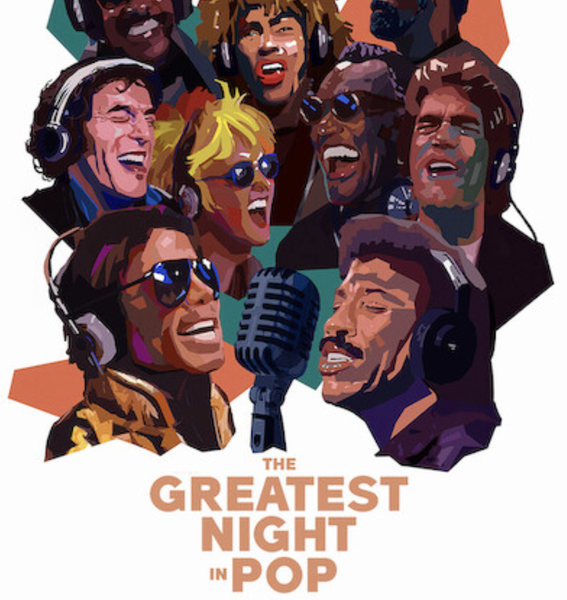Commentary
It Happened That Night
- by Barbara Lippert , Columnist, February 17, 2024

Let’s face it. The 1985 song “We are the World” was always a bit cringey, more jingle than single.
But as recorded by the tippy-top stars of the music world at that time, smushed together in one steamy studio for one night that lasted until dawn, it’s a miracle. And, as it turns out, an earworm. As played on radio stations throughout the world, it went on to earn about $50 million for African famine relief, specifically feeding starving Ethiopians who were the victims of war. So it served a higher purpose than becoming a top 40 song.
As we see in the Netflix documentary “The Greatest Night in Pop,” (not the greatest name) the idea originated with Harry Belafonte, who wanted to do a Bob Geldof-style Band Aid session with black artists raising awareness for the economic conditions in Africa. He wrangled Quincy Jones, who wrangled Lionel Richie and Michael Jackson to write the song. Ken Kragen, Richie’s manager, called in a million favors. No one knew the song had been written just the week before and was still unfinished. Changes to lyrics were made that night as they sang. (“Better day” was changed to “brighter day,” for instance.)
advertisement
advertisement
Most of all, it was possible to get this this constellation together briefly only because all these musicians had attended the American Music Awards that same evening, which Richie hosted, and then were wrangled over to the studio for eight hours of overtime.
Bruce Springsteen drove himself and was proud of the parking spot he got right out front. We learn that the Boss sounded especially croaky, but still came through, because he had just come off a grueling, year-long “Born in the USA” tour, finishing in Syracuse, New York the night before. He flew to L.A. and his voice was shot.
Cameras recorded the recording process that night. I remember seeing clips back then (almost 40 years ago!) and thinking this amazing assemblage of dressed-down icons in headphones -- Paul Simon, Bob Dylan, Diana Ross, Stevie Wonder, Tina Turner, Billy Joel, Dionne Warwick and 30 more -- all looked a bit sweaty, and that the sound of their voices was a bit off.
“The Greatest Night in Pop” shows why.
It’s a nostalgia fest filled with nuggets of inside info and intrigue: who walked out, who got drunk, the trouble with Cyndi Lauper’s mic. It also manages to deliver a sweeping overview that should get a lot more traction.
The genius of Quincy Jones shows, as producer and orchestrator of music, plus anxious superstar whisperer. Even though he famously slapped the sign “Leave your ego at the door” on the door, we see that some of these celebs were shy around their peers, many of whom they had never met. Some even fangirled and boyed around their own musical heroes. Footage shows Diana Ross running up to Daryl Hall with her music in her hands, saying, "Daryl, I'm your biggest fan. Would you sign my music for me?"
The other trouble shooter, producer, and miracle worker, Richie, serves as a charming narrator here, starting with the back story of working with Jackson to write the song. He remembers meeting with Michael at Neverland when his pet snake, Muscles, suddenly appeared. “I’ve seen this horror movie, and it doesn’t end well for the brother,” Richie tells the camera, describing the moment the snake emerged, right as he and Jackson came up with the song’s chorus. “He heard us singing, Lion-EL,” Richie said Jackson told him. “He wants to meet you.” (Yes, the king of pop referred to Richie as Lion-El, like the trains.)
Richie also discloses that the King of Pop could not read or write music.
But the most memorable shocker to me was seeing rock god Bob Dylan fall apart. He’d looked extremely uncomfortable all evening, and when it was his turn for a stanza at the mic, he went all awkward and silent, as if he’d never sung before.
Stevie Wonder saved him, taking him into another room and working with Dylan on the piano to find the right notes, and singing the words as if he were the Bard himself.
Wonder also walked Ray Charles to the bathroom, joking about the blind leading the blind.
It’s damning with faint praise to say that “The Greatest” is far greater than the song itself, but it is. The “making of” in this case, is a straightforward presentation with great narration, contemporary interviews with some of the stars, and terrific archival footage. We get to see the parts, and the sum. It’s worth a view.



